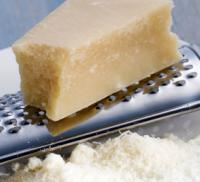US rights to export variety of cheeses to Korea upheld

National Milk Producers Federation | 25 June 2011
US rights to export variety of cheeses to Korea upheld
(NMPF News Release)
The U.S. Dairy Export Council (USDEC), National Milk Producers Federation (NMPF) and the International Dairy Foods Association (IDFA) welcome the release by the U.S. Trade Representative’s Office (USTR) today of letters between USTR and the South Korean government, which contain important clarifications regarding the ability of U.S. cheese manufacturers to continuing shipping to Korea a wide variety of cheeses of importance to the U.S. dairy industry. Korea is currently the No. 2 export market for U.S. cheese.
The text of the Free Trade Agreement (FTA) that Korea negotiated with the EU in 2009 included unprecedented language on geographical indications (GIs) for several cheeses, as well as other food products. This language called into question whether or not the U.S. would be able to continue to sell many important varieties of cheese to Korea such as brie, camembert, emmental, grana, mozzarella, parmesan, romano and provolone.
For the past year and a half, USDEC, NMPF and IDFA have worked with the U.S. government to seek assurances that these cheeses would still be permitted for sale by all suppliers, including those from the United States, in the fast-growing Korean market. In addition, the Congressional Dairy Farmer Caucus also expressed concerns about this issue. USDEC, NMPF and IDFA view the letters released today by USTR as providing these important assurances for the cheese names listed above.
“The U.S. dairy industry makes a variety of high-quality cheeses, all of which we sought the opportunity to export to Korea when the U.S. and Korea negotiated its FTA several years ago,” said Jerry Kozak, President and CEO of NMPF. “We appreciate the clarifications, which indicate that U.S. cheese makers will be able to market the majority of their products in Korea. This becomes all the more important once the U.S.-Korea FTA goes into effect, given the estimated strong returns that agreement is expected to bring to U.S. dairy producers.”
“The Korean market is already one of our largest export markets, accounting for $131 million in U.S. dairy exports last year with roughly 60% of that total from cheese sales,” said Tom Suber, president of USDEC. “For U.S. exporters, it’s critical to ensure they have the clarity needed to sell cheese to Korea. We look forward to introducing even more great U.S. cheeses to the Korean market once the U.S.-Korea FTA wins congressional passage and goes into effect.”
“I want to thank the U.S. Trade Representative and his team for all their hard work on this complex issue,” said Connie Tipton, IDFA’s president and CEO. “The clarifications on cheese names announced today uphold the value of the US-Korea free trade agreement, which we hope will soon be passed and implemented by both countries. Estimates indicate that passage of the Korea FTA would result in up to $336 million in increased dairy exports, so we need to do everything we can to make sure that potential is realized.”
Significant as these clarifications are, it is important to note that concerns remain regarding the use of other cheese names of interest (e.g. asiago, feta, fontina, gorgonzola), which the EU-Korea FTA has called into question. These cheeses are also produced by a wide variety of U.S. companies that are increasingly active in export markets. Regardless of how these names are treated in Korea, however, USDEC, NMPF and IDFA are eager to ensure that they would continue to be permitted to be used in other important markets in light of the common-use status of these terms in many countries around the world.
The U.S. dairy industry has taken seriously the danger to U.S. cheese exports that inappropriately applied EU geographical indication goals pose as the EU negotiates with many important markets, particularly in Latin America and Asia. NMPF, IDFA and USDEC expressed great appreciation for the U.S. government’s willingness to work with America’s dairy industry to tackle this threat head-on and help the industry continue to expand exports.





